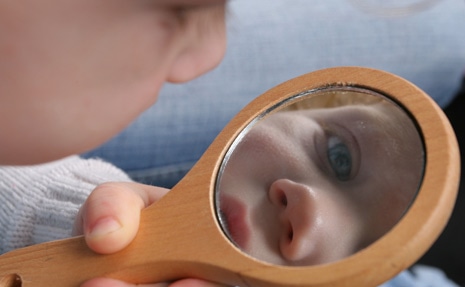
In a recent episode from my radio show, Uplift Your Life: Nourishment of the Spirit, my guest, Carolin Houser, and I take on the sensitive topic of sexual abuse, and provide tangible methods for healing from the trauma. In addition to sharing some of that information in this blog, Marian Stephens talks about how she is using the information in the episode to change her life. More of Marian’s story and all my previous blogs are on my website, paulajoyce.com. Be sure to check them out.
Dr. Paula’s Tip of the Week
17,700,000 women have reported sexual violence since 1998. The #metoo movement has sparked a global conversation about the breadth of sexual violence against women, highlighting the need for tools to help survivors heal. Honoring the survivor’s healing process with patience and empathy is vital and will empower them to overcome the trauma they endured.
Your tip for this week is from my e-book, 33 Tips for Self-empowerment: Allow Yourself to Feel. Robert Frost said: “The only way around it, is through it.” When faced with emotional pain, allow yourself to feel the pain. Then let it go. Crying releases stress hormones from your body. This makes room for the joy. If you have difficulty feeling your emotions, rent a sad movie to help you connect to your feelings. There have been times when I cried, and I wasn’t even sure what caused the tears. I just knew that a deep sadness was coming to the surface and I needed to cry. I don’t apologize for those tears nor do I try to stop them. In fact, a psychologist told me once that when someone is crying, you can comfort them by just being present with them. We often think that it’s helpful to touch their hand or hug them. Those gestures of kindness, however, can cause the person to move out of their emotions and stop crying when what they need is to feel and let the tears do their healing work. When the tears have stopped, we can offer words and hugs of compassion and comfort with the person’s permission. We often rush in thinking we know what’s best or because of our own discomfort with tears or emotions. Part of compassion is learning how to honor and respect the healing process—our own and that of others.
Tears come in their own time and in their own way when the person feels safe enough to accept, process and integrate their own pain. I had one client who was in her 40’s and had never cried over her experience of childhood incest, despite years of counseling and a stay in a residential facility after a nervous breakdown. In our work together, she drew a tear and cried her first tears. Her Higher Self showed her through the drawing that she was ready to express her deep pain and heal the wounded child within. Another client who came to me with debilitating pain, also had never cried over the traumas she experienced as a child and as an adult. Like most women, she didn’t understand that her husband had raped her several times over the years. She assumed that it was his right, as her husband, to have access to her body whenever he chose, even if she said “no.” The fact that she didn’t physically try to fight him off, doesn’t change the fact that he sexually assaulted her. We all have the right to choose when we are available for sex and no one should ever be disrespected sexually by anyone, including, or maybe especially, by their spouse. When the tears came, they were unexpected and overwhelming, and they opened the path for her to finally tell her husband that she had felt violated all of those times when he pushed himself on her after she had said “no.” Those tears also helped her let go of some of the emotional pain that had gotten stuck in her body as physical pain because of the assaults. As we let ourselves become aware of the truth, we can heal.
Dr. Paula’s Silver Lining Story
Treating others with kindness and compassion is more important than we can imagine. The positive impact our words have on a person is immeasurable. Being mindful of how you speak and choosing kindness is an opportunity to create happiness.
This episode’s silver lining story is short to point out that everything matters when we pay attention and take the time for compassion and kindness. I was having trouble fitting in a client who wanted an extra appointment. I offered to contact her if I had a cancellation, and this was her response: “I’ll wait. I will always have as many questions for you as stars in the night sky. I know you and your team of angels will have the light to make them shine.” I was so touched by her kindness and the poetry of her words. If I hadn’t offered one more option, I would have missed getting this beautiful text. Even trying to set a simple appointment can be an opportunity for silver linings.
Marian Stephens’ Story
Each show on Uplift Your Life: Nourishment of the Spirit has an overarching theme which is if you get to the root of your emotional pain and heal it, then you will be able to heal your body and happily manage your life. Today’s show on healing sexual abuse gave me a few solid ways to achieve this. I know I have begun this healing journey with the show because I am tired of just feeling that I am simply surviving; it is time to flourish. As I said in an email earlier this week, “I am a survivor of abuse…”. I want to be able to say I am thriving having had the experience of abuse.
Dr. Paula’s tip for the week is to allow yourself to feel. Abuse is insidious in that it alters your perception and ability to trust, which creates a pattern of negative emotions. The negative emotions are difficult to feel and bring back a sense of trauma, so you squash those down to forget; often squashing down all emotion. Carolin Hauser suggests allowing yourself to feel the sensations that are created in your body, and to sit with the negative emotions. The only way to root out negative emotion is to fully feel it. One of the most difficult emotions for me to feel is anger. So, that has been the emotion that I keep struggling with. I do not trust myself to know when it is appropriate to be angry, so I tell myself to ignore the feeling. That just leads to it building up, and then I get disproportionately angry. This cycle is not getting better, just increasing in frequency. I am going to allow myself to fully experience anger this week, and I started today. I got overly angry and while I forced myself to sit alone and not speak my angry words, I did not force myself to quit feeling angry until it subsided. After I calmed down, I realized that I have a lot of anger towards my abuser that I have no good way to express, which is uncomfortable. So, I suppress all anger, and that is toxic. Maybe if I allow myself to feel anger, I will release the old anger I have pent up inside of me, ultimately not getting so angry so often.
Dr. Paula and Carolin Hauser both expressed that not taking responsibility is one of the main blocks to emotional healing. With abuse, there is a fine line between taking responsibility and blame. Blaming myself or my abuser simply distracts me from healing the emotional pain of what happened. If I view my relationship with my abuser as one that I chose before this life started, a soul contract meant to help me learn and grow, I think I can begin to reconcile the emotional pain that is contributing to the progression of my multiple sclerosis. Raising a child with special needs, divorce, an abusive relationship, and chronic illness are big lessons to learn in a lifetime. I do believe if I heal the pain from each of these experiences I will be able to reach my potential, including a physically healthy and able body.
Dr. Paula’s Coaching Response
Marian, I continue to be impressed with the way you take the content of each show and use it to grow. When you’re being abused, a lot of anger does build up and you have no safe way to release it. Now you can. So, yes, allow yourself to feel it and then use these techniques to release the anger.
1. Breathe out the anger with a big sigh and imagine that the breath is releasing toxins in the color of grey. Then take in a deep breath of pink air and see it filling your body with emotionally healing energy and light. Do this until the anger passes.
2. Turn your anger into righteous indignation that helps to solve the problem. For instance, make even a small donation to a women’s shelter; speak out against abuse, as you are doing in this blog; and/or volunteer at a women’s shelter; and realize that healing yourself is helping to heal your family line.
3. Write and/or draw your angry thoughts and feelings until the anger is spent.
For more shows on healing from the trauma of abuse, please listen to:
· Healing Trauma Through Spirituality with Dr. Christine Courtois
· Limitless Possibility with Tracie Stafford with Tracie Stafford
· Emotional Abuse How to Recognize It and Heal with Dr. Marti Loring
FREE CHAPTER, THE ULTIMATE CREATIVE PROBLEM-SOLVING PROCESS, FROM MY BEST-SELLING BOOK, NOTHING BUT NET
To learn more about my unique process that removes hidden blockages, helps you solve your most challenging problems, and achieve success with ease and speed, sign up for my newsletter and receive the chapter as my gift: http://paulajoyce.com/wpsite/newsletter-sign-up/





